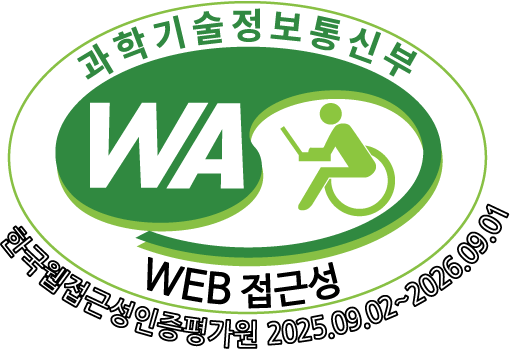소프트웨어 중심 자동차(SDV)는 차량의 하드웨어와 소프트웨어가 독립적으로 발전하며, 무선 업데이트(OTA)와 데이터 기반 사용자 맞춤형 서비스를 통해 단순한 이동 수단에서 스마트 플랫폼으로 변화시키고 있다. 이러한 변화는 자동차 산업 전반에 혁신적인 전환을 요구하며, 글로벌 시장의 경쟁 구도도 빠르게 재편되고 있다. 본 연구는 국내 SDV 산업의 경쟁력을 강화하고, 급증하는 소프트웨어 인력 수요와 같은 주요 도전 과제를 해결하기 위한 구체적인 정책 방향을 제안하는 것을 목적으로 한다. 특히, SDV 산업에서 요구되는 소프트웨어 인력의 핵심 역량과 그에 따른 역할 변화를 분석하고, 자동차 제조업체와 ICT 기업 간 협력 체계 구축 방안을 모색한다. 이를 통해 국내 기업들이 글로벌 시장에서 경쟁력을 확보할 수 있는 전략적 시사점을 도출하고자 한다. SDV 전환의 성공을 위해 가장 중요한 요소는 자동차 제조업체와 소프트웨어 기업 간의 협력 체계 강화다. 이들 간의 협력은 상호 보완적 시너지를 창출하며, SDV 생태계의 혁신 속도를 가속화할 수 있다. 이를 위해 정부는 산학협력 모델 구축, 공동 연구개발 지원, 공공 데이터와 연구 플랫폼 제공 등 다양한 정책적 노력을 통해 협력 생태계를 조성해야 한다. 또한, 소프트웨어 전문 인력의 양성과 확보는 SDV 전환을 기회로 삼기 위한 핵심 과제다. SDV를 지원할 수 있는 다학제적 접근의 교육 과정과 실무형 인재 양성을 위해 산학 협력을 강화하고, 융합형 인재를 육성할 전문 교육 기관의 설립 및 지원이 필요하다. 아울러, 중소기업과 스타트업을 포함한 국내 기업들이 글로벌 시장에서 경쟁력을 갖출 수 있도록 혁신 기술과 아이디어를 공유할 수 있는 개방형 생태계를 조성해야 한다. 이를 위해 규제를 완화하고, 중소기업의 기술 개발을 지원하는 펀드 조성, 테스트베드 구축, 글로벌 표준화 협력 등도 주요 과제로 고려해야 한다. 요약하면, SDV는 자동차 산업의 본질적 혁신을 요구하며, 글로벌 시장에서 새로운 기회를 제공한다. 그러나 전환 과정에서 소프트웨어 인력 부족, 협력 생태계 미흡, 산업 생태계의 폐쇄성 등은 반드시 해결해야 할 도전 과제다. 정책적으로 소프트웨어 중심 혁신을 지원하고, 산업 간 협력을 촉진하며, 융합형 인재를 양성함으로써 SDV 산업의 경쟁력을 강화해야 한다. Executive Summary SDV(Software-Defined Vehicle) enable the independent evolution of hardware and software, transforming vehicles from mere transportation tools into smart platforms through OTA(Over-the-Air) updates and data-driven personalized services. This shift demands an innovative transformation across the automotive industry and is rapidly reshaping the competitive landscape of the global market. This study aims to propose concrete policy directions to enhance the competitiveness of South Korea's SDV industry and address critical challenges such as the surging demand for skilled software professionals. In particular, it focuses on analyzing the core competencies required of software talent in the SDV sector and the subsequent changes in their roles, while exploring strategies to establish collaborative frameworks between automotive manufacturers and ICT companies. These efforts aim to provide strategic insights to help domestic companies secure a competitive edge in the global market. A key factor for successfully transitioning to SDVs is strengthening the collaborative framework between automotive manufacturers and software companies. Such collaboration generates complementary synergies and accelerates innovation within the SDV ecosystem. To support this, the government should foster a cooperative ecosystem through initiatives such as building industry-academia collaboration models, supporting joint research and development, and providing public data and research platforms. Additionally, cultivating and securing skilled software professionals is a crucial task for leveraging the opportunities presented by the SDV transition. To achieve this, it is essential to strengthen industry-academia collaboration, develop multidisciplinary educational programs, and nurture practical, workforce-ready talent. Establishing and supporting specialized educational institutions dedicated to fostering multidisciplinary professionals will also play a key role. Furthermore, an open ecosystem must be established to enable domestic companies, including SMEs and startups, to share innovative technologies and ideas, thereby enhancing their global competitiveness. Key policy measures should include regulatory reforms, creating funding mechanisms to support SME technology development, establishing testbeds, and fostering collaboration on global standardization. In summary, SDVs demand fundamental innovation in the automotive industry and present new opportunities in the global market. However, challenges such as a shortage of software talent, inadequate collaborative ecosystems, and the closed nature of the industrial structure must be addressed. Policymakers must support software-driven innovation, promote cross-industry collaboration, and nurture multidisciplinary talent to strengthen the competitiveness of the SDV industry.



